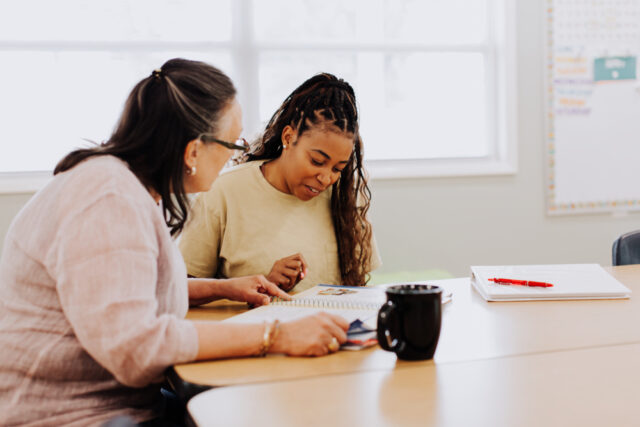
Quality family time is as important as ever, though how families connect may look different from household to household. No matter how families bond, there are many benefits when students spend time with family. Learn about the benefits of family time and ways families can forge deeper relationships.
The importance of spending quality time with family
Family time is all about bonding and sharing experiences, regardless of who makes up that family unit. Whether a child lives with parents, grandparents, siblings, extended family members, foster families, or has another living situation, quality family time provides a sense of belonging. Quality family time can also help establish traditions and routines that can serve children throughout their lives.
However, it’s important to note that family time might look different depending on the family unit and the capacity a family might have for organizing activities. Families might face barriers to prioritizing family time, such as work schedules, economic pressures, varying school schedules, and more.
How do children benefit from family time?
Family time activities can be many and varied. They may include playtime or quiet storytelling. They may come in the form of creative projects or exploring the great outdoors. They may also include tech-based activities, such as playing video games together or watching a movie as a family unit and then discussing it. Regardless of the form that family time takes, it offers a host of benefits:
Secure relationships: Repeated positive connections between children and their caregivers foster secure attachments, which can lead to better physical and mental well-being. These positive relationships can impact a student’s academic performance.
Self-esteem and social skills: Time spent with the family unit builds self-esteem in young people. Children who have strong family bonds have greater confidence in their own abilities. They also have stronger social skills thanks to the appreciation and love they receive from their parents or caregivers. This enables children to build their own positive relationships when they get older.
Behavioral learning: Quality family time also helps to nurture positive behavior in young people. When parents and caregivers participate in activities regularly with their kids, they can mentor them more effectively. This means they can promote good behavior while addressing problems early. This helps children to realize that they’re accountable for their own behavior in social settings. This offers many advantages for young people later in their lives; they’ll develop the ability to behave appropriately around strangers or even in the workplace.
Ideas for family time
Below are a range of engaging ideas for quality family time, including options for those with busy schedules, limited resources, and technology preferences. No matter the activity, it’s vital to encourage communication and interaction between family members to strengthen relationships and develop valuable skills.
- Playing board games
- Going on a bike ride together
- Playing sports
- Engaging in outdoor activities, such as nature walks, hiking, scavenger hunts, gardening, or camping
- Volunteering
- Cooking a meal
- Walking to school together
- Having conversations before bedtime or during car rides
- Using free community resources, such as library or community center activities and events
Technology-related ideas
- Playing cooperative video games, online board games, interactive VR games, or puzzle games together
- Watching movies or shows together followed by discussion
- Family karaoke sessions or dance parties
- Learning new skills together through educational apps or online tutorials
- Using technology to connect with distant family members or different households
- Collaborative creative projects using digital tools
How educators can support family connections
There are ways schools can help strengthen family connections while considering their students’ family circumstances.
First, recognizing that families have varying schedules and availability for school events or meetings, schools can offer flexible communication options.
Additionally, educators can assign projects that encourage family interaction while supporting academic goals, such as interviewing a family member or sharing a family tradition.
Finally, schools can provide information about free or low-cost community resources that support families.
Taking time to be together as a family
It’s clear that spending time together as a family unit is as important today as ever. While parents or caregivers and kids don’t need to spend every hour of the day with each other, regularly participating in joint activities is highly beneficial.
When students spend more time with their families, they benefit in many ways. They develop stronger family bonds, create positive memories, and learn appropriate behaviors. When families strengthen their bonds, the advantages stretch beyond simply enjoying each other’s company.
The benefits for students extend into their future, helping them enjoy greater success and well-being later in life. And isn’t that what we all want for the next generation?
This article was adapted from a blog post initially developed by the education technology company Classcraft, which was acquired by HMH in 2023. The views expressed in this article are those of the author and do not necessarily represent those of HMH.
Be the first to read the latest from Shaped.














